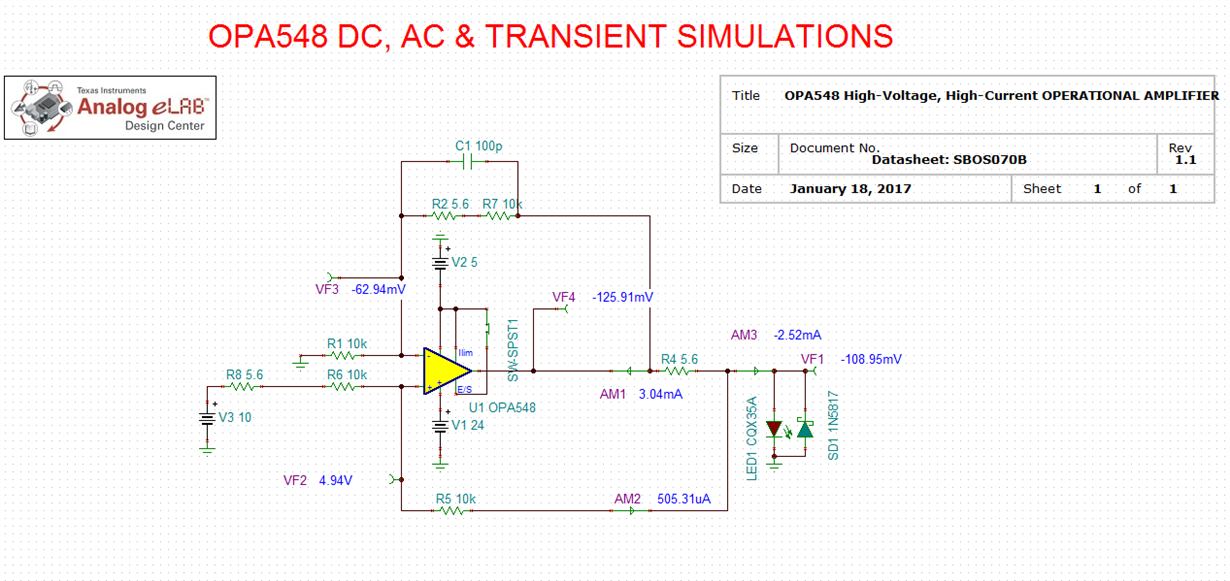I'm using the output disable function of the OPA548 like shown in the Datasheet (Fig. 24).
The application is a modified Howland current source which controlls the current of a high power LED.
A DC voltage sets the output current and the output disable is used to pulse the LED.
When I activate the disable, I expect the output to go to zero. This is actually what it does with a resisitive load (R=10Ohm) - but when I connect a LED, the output goes to the negative supply!
Could someone please explain that? Did I miss something?
Thanks, Boris
Load: 10 Ohm resistor (yellow: Load; blue trigger signal)
Load: LED (yellow: Load; blue trigger signal)
the schematic:




